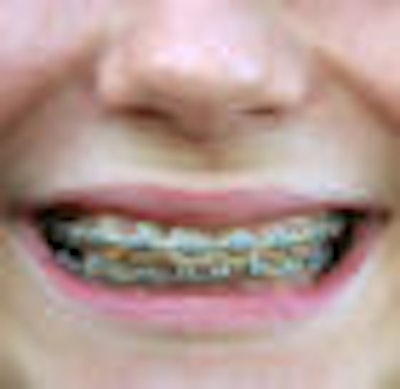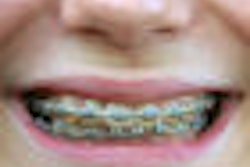
Like most U.S. states, Missouri provides Medicaid coverage for pediatric orthodontics. But dentists, parents, and program administrators all agree that the qualification system is flawed.
So the question remains: What is a fair way to determine which children should qualify for orthodontic care?
Robert Waxler, DMD, the orthodontic director for MO HealthNet and a practicing orthodontist for 30 years, is responsible for deciding whether children meet Medicaid standards for orthodontics set by a dental advisory committee under MO HealthNet, which administers the program that covers poor children.
"It's an entitlement, so we have to have a system where you can score it, and of course you have to have a cutoff," Dr. Waxler explained.
“You're talking about the worst of the worst.”
— Robert Waxler, DMD
Missouri uses the Handicapping Labio-Lingual Deviation (HLD) Index Score Sheet to evaluate orthodontic cases for children (younger than 21) who qualify for Medicaid, with a 28-point cutoff. Dr. Waxler estimates that only about one out of 25 children who come into his office have teeth that are badly aligned enough to qualify for state-paid treatment.
"You're talking about the worst of the worst," he told DrBicuspid.com. "So every one of these kids who qualify, we're not talking about making them prettier, we're talking about people who are truly deformed."
Many of the Medicaid cases are being done by general dentists because most orthodontists won’t take them due to low reimbursements, Dr. Waxler noted. “You’re talking about the worst and most difficult cases so these cases really should be done by orthodontists,” he said.
Dr. Waxler, who takes Medicaid cases, find them both challenging and satisfying. “These are the most difficult, challenging cases so it makes you think and stretches your abilities,” Dr. Waxler observed. “And when you fix one of these patients you really feel like you’ve done something good, because these kids are really in bad shape.”
Insurance companies used to limit orthodontic coverage to cases of medical necessity, not cosmetics, Dr. Waxler added.
"And, guess what? Every single patient had a medical necessity. You're making somebody look better, but you're also improving the function of the teeth," he said. "So they dropped that requirement because it basically eliminated nobody."
Nationwide, Medicaid coverage for braces is limited to medical need, not for cosmetic reasons. But that definition can be very subjective, according to Dr. Waxler.
"So if you allow this kind of gray, wishy-washy standard, you're basically saying, 'We're going to treat everybody,' and you can't," he said. "If there was more money in the system, we could drop the numbers and treat more of these problems."
Evaluation system flawed
Enter Jo Anne Morrow, a former nurse who is now an attorney with Legal Services of Eastern Missouri. Dentists refer Medicaid cases to her that have been denied because the patients scored lower than the 28-point cutoff.
Morrow has an impressive track record: She has been appealing such cases since 1997 and has obtained orthodontic treatment for 89 children in eastern Missouri in the last nine years who had previously been rejected under the state's Medicaid standards. In 2006, she went as far as the state Court of Appeals to win braces for a teenager being raised by her disabled grandparents.
"The child should get treatment if they qualify, and in almost all of these cases, the orthodontist who examines the child has told me 'This kid should qualify,' " Morrow said.
Both Morrow and Dr. Waxler agree that the HLD evaluation is flawed. HLD scoring indexes were used in clinical studies and research but were never designed for Medicaid eligibility, Dr. Waxler noted.
"Everybody agrees that it's a terrible way to do this; it's a horrible system," he said. "It's just better than every other one, and you have to have a system that is completely subjective."
Morrow relies on the federal Early Periodic Screening, Diagnosis, and Treatment requirement, which states Medicaid treatment is warranted for the relief of pain or infection and the restoration of teeth.
"I always emphasize the maintenance of dental health," she explained. "That's what I hang my hat on."
In many cases, Morrow says orthodontists warn of the consequences that the child will face without treatment: possible loss of teeth due to the crowding of roots or misalignment, periodontal disease, temporomandibular joint disorder, or orthognathic surgery.
Abusing the system?
Dr. Wexler eschews such ominous diagnoses. “There are a lot of legitimate reasons for treatment, but to say 'my kid has to have braces or his teeth will fall out by the time he’s 18,' that’s bogus," he said. "Any orthodontist will tell you that doesn’t happen."
Recently, Morrow successfully appealed the case of Brianna Price, age 12, who had such a severe crossbite that her gums bled when she chewed, according to her mother, Christine Price of St. Charles County, MO.
"The orthodontist said if she didn't get braces, she'd lose all her teeth by the time she was 18," Price told DrBicuspid.com. "I think the system needs to be changed because a lot of kids, if they have bad teeth, they're going to be bullied, and I don't think they understand that. Brianna was being made fun of because of her teeth and her smile; she had no confidence or self-esteem at all."
Price was thankful for Morrow's help in getting her daughter's braces. "There are no words to express how grateful I am," she said. "I really appreciate what she did for Brianna."
But Dr. Waxler said appealing cases that don't come close to meeting requirements, just takes away treatment from children whose cases are much worse.
"I think it's an abuse of the process," he said. "If there's a legitimate reason, that's fine, but if they argue that a kid needs to be approved because they've got psychological difficulties and kids are making fun of them, every kid could say that."



















